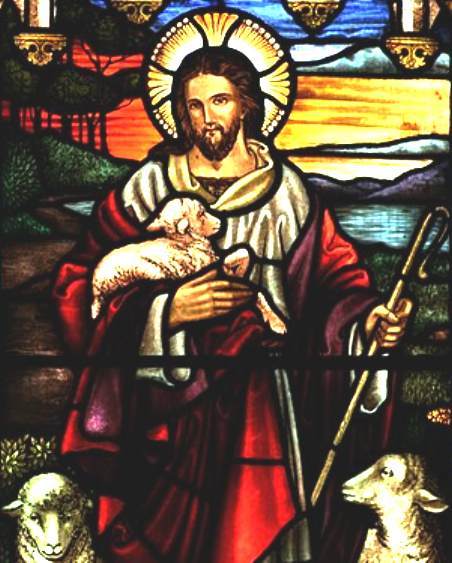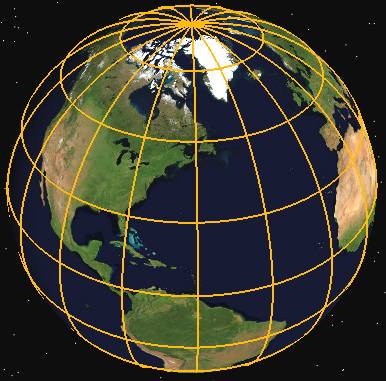|

The
story of Jesus (Greek: Iēsous; 7–2 BC/BCE to 30–36 AD/CE), also referred to as Jesus of Nazareth, is the central figure of Christianity, whom the teachings of most Christian denominations hold to be the Son of God. Christians hold Jesus to be the awaited Messiah of the Old Testament and refer to him as Jesus Christ or simply Christ, a name that is also used by non-Christians. In Islam, Jesus is considered to be a prophet.
Virtually all modern scholars of antiquity agree that a historical Jesus existed, although there is little agreement on the reliability of the gospel narratives and their theological assertions of his divinity. Most scholars agree that Jesus was a Jewish teacher from Galilee, was baptized by John the Baptist, and was crucified in Jerusalem on the orders of the Roman prefect, Pontius Pilate. Scholars have offered various portraits of the historical Jesus, which at times share a number of overlapping attributes, such as the leader of an apocalyptic movement, Messiah, a charismatic healer, a sage and philosopher, or a social reformer who preached of the "Kingdom of God" as a means for personal and egalitarian social transformation. Scholars have correlated the New Testament accounts with non-Christian historical records to arrive at an estimated chronology of Jesus' life.
Most Christians believe that Jesus was conceived by the Holy Spirit, born of a virgin, performed miracles, founded the Church, died sacrificially by crucifixion to achieve atonement, rose from the dead, and ascended into heaven, from which he will return. The majority of Christians worship Jesus as the incarnation of God the Son, who is the Second Person of the Holy Trinity. A few Christian groups reject Trinitarianism, wholly or partly, as non-scriptural.
In Islam, Jesus (commonly transliterated as Isa) is considered one of God's important prophets. To Muslims, Jesus is a bringer of scripture, and the product of a virgin birth, but not the victim of crucifixion. Judaism rejects the belief that Jesus was the awaited Messiah, arguing that he did not fulfill the Messianic prophecies in the Tanakh. Bahá'í scripture almost never refers to Jesus as the Messiah, but calls him a Manifestation of God.
CRUCIFIXION
& BURIAL
Jesus' crucifixion is described in all four canonical gospels, is attested to by other sources of that age, including Josephus and
Tacitus, and is regarded as an historical event.
After the trials, Jesus made his way to Calvary (the path is traditionally called via
Dolorosa) and the three synoptic gospels indicate that he was assisted by Simon of
Cyrene, the Romans compelling him to do so. In Luke 23:27–28 Jesus tells the women in the multitude of people following him not to cry for him but for themselves and their children. Once at Calvary (Golgotha), Jesus was offered wine mixed with gall to drink – usually offered as a form of painkiller. Matthew's and Mark's gospels state that he refused this.
The soldiers then crucified Jesus and cast lots for his clothes. Above Jesus' head on the cross was the inscription King of the Jews, and the soldiers and those passing by mocked him about the title. Jesus was crucified between two convicted thieves, one of whom rebuked Jesus, while the other defended him.
The Roman soldiers did not break Jesus' legs, as they did to the other two men crucified (breaking the legs hastened the crucifixion process), as Jesus was dead already. One of the soldiers traditionally known as Saint
Longinus, pierced the side of Jesus with a lance and water flowed out. In Mark 15:39, impressed by the events, the Roman centurion calls Jesus the Son of God.
Following Jesus' death on Friday, Joseph of Arimathea asked the permission of Pilate to remove the body. The body was removed from the cross, was wrapped in a clean cloth and buried in a new rock-hewn tomb, with the assistance of Nicodemus. In Matthew 27:62–66 the Jews go to Pilate the day after the crucifixion and ask for guards for the tomb and also seal the tomb with a stone as well as the guard, to be sure the body remains there.
RESURRECTION
& ASCENSION
The New Testament accounts of the resurrection and ascension of Jesus, state that the first day of the week after the crucifixion (typically interpreted as a Sunday), his followers encounter him risen from the dead, after his tomb is discovered to be empty.
The resurrected Jesus appears to them that day and a number of times thereafter, delivers sermons and commissions them, before ascending to Heaven. When the tomb is discovered empty (Matthew 28:5, Mark 16:5, Luke 24:4 and John 20:12) his followers arrive there early in the morning meet either one or two beings (either men or angels) dressed in bright robes who appear in or near the tomb. Mark 16:9 and John 20:15 indicate that Jesus appeared to Mary Magdalene first, and Luke 16:9 states that she was among the Myrrhbearers.
After the discovery of the empty tomb, the gospels indicate that Jesus made a series of appearances to the disciples. These include the well known Doubting Thomas episode and the Road to Emmaus appearance where Jesus meets two disciples. The catch of 153 fish appearance includes a miracle at the Sea of Galilee, and thereafter Jesus encourages Peter to serve his followers.
The final post-resurrection appearance in the gospel accounts is when Jesus ascends to Heaven. Luke 24:51 states that Jesus "was carried up into heaven". The ascension account is elaborated in Acts 1:1–11 and mentioned 1 Timothy 3:16. In Acts 1:1–9, forty days after the resurrection, as the disciples look on, "he was taken up; and a cloud received him out of their sight." 1 Peter 3:22 describes Jesus as being on "the right hand of God, having gone into heaven".
The Acts of the Apostles also contain "post-ascension" appearances by Jesus. These include the vision by Stephen just before his death in Acts 7:55, and the road to Damascus episode in which Apostle Paul is converted to Christianity. The instruction given to Ananias in Damascus in Acts 9:10–18 to heal Paul is the last reported conversation with Jesus in the Bible until the Book of Revelation was written.
LINKS
and REFERENCE
GNU
free documentation license
|

